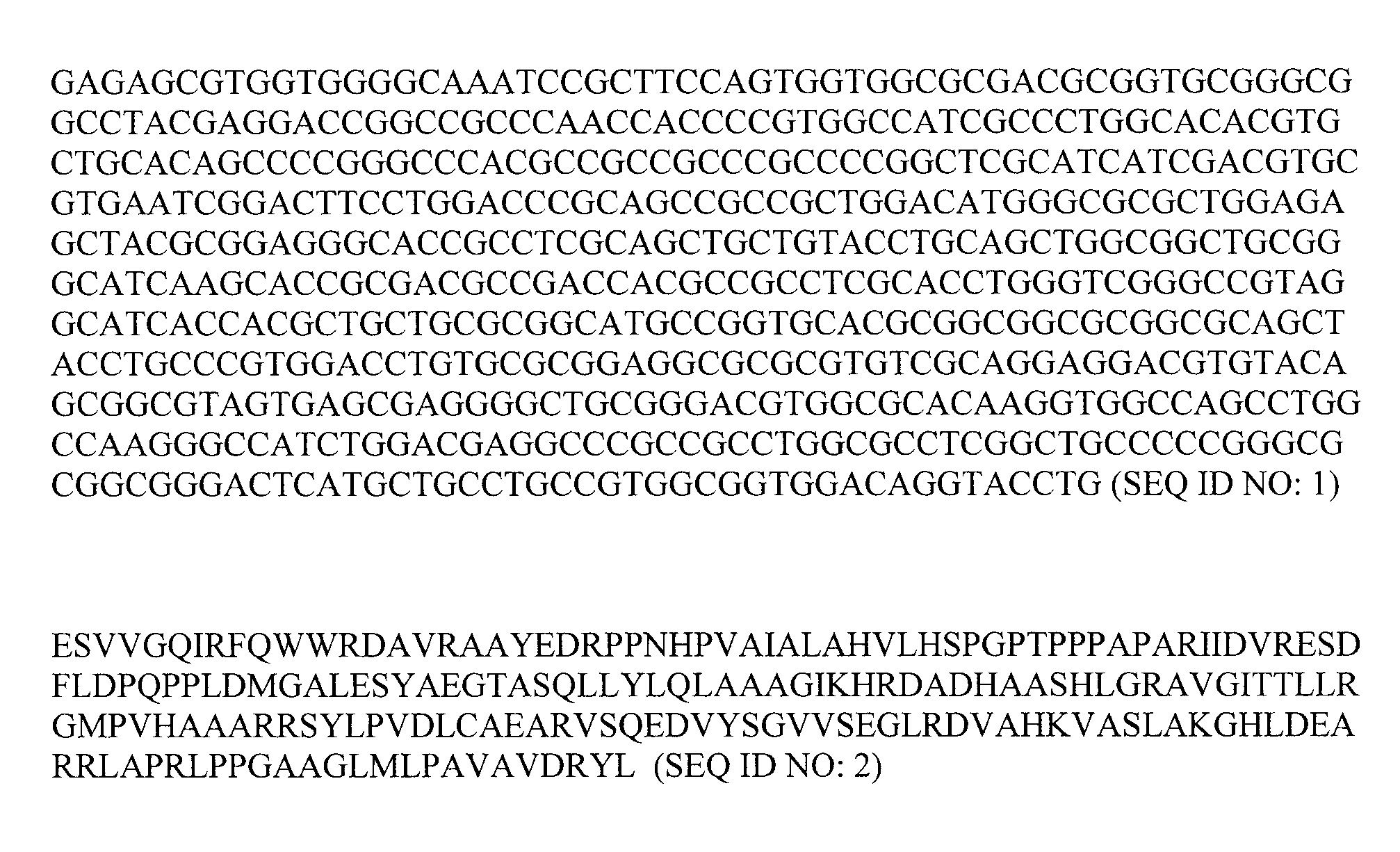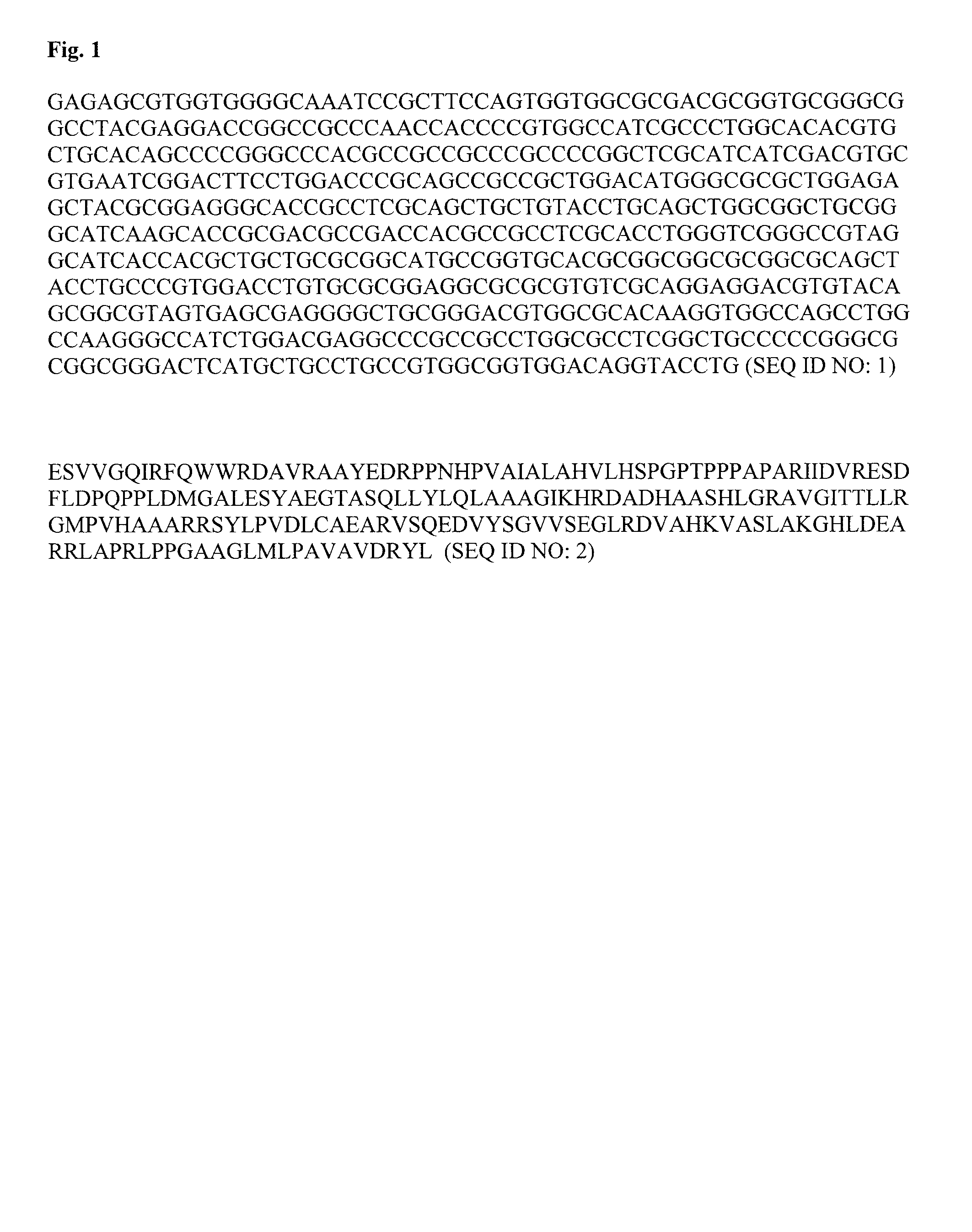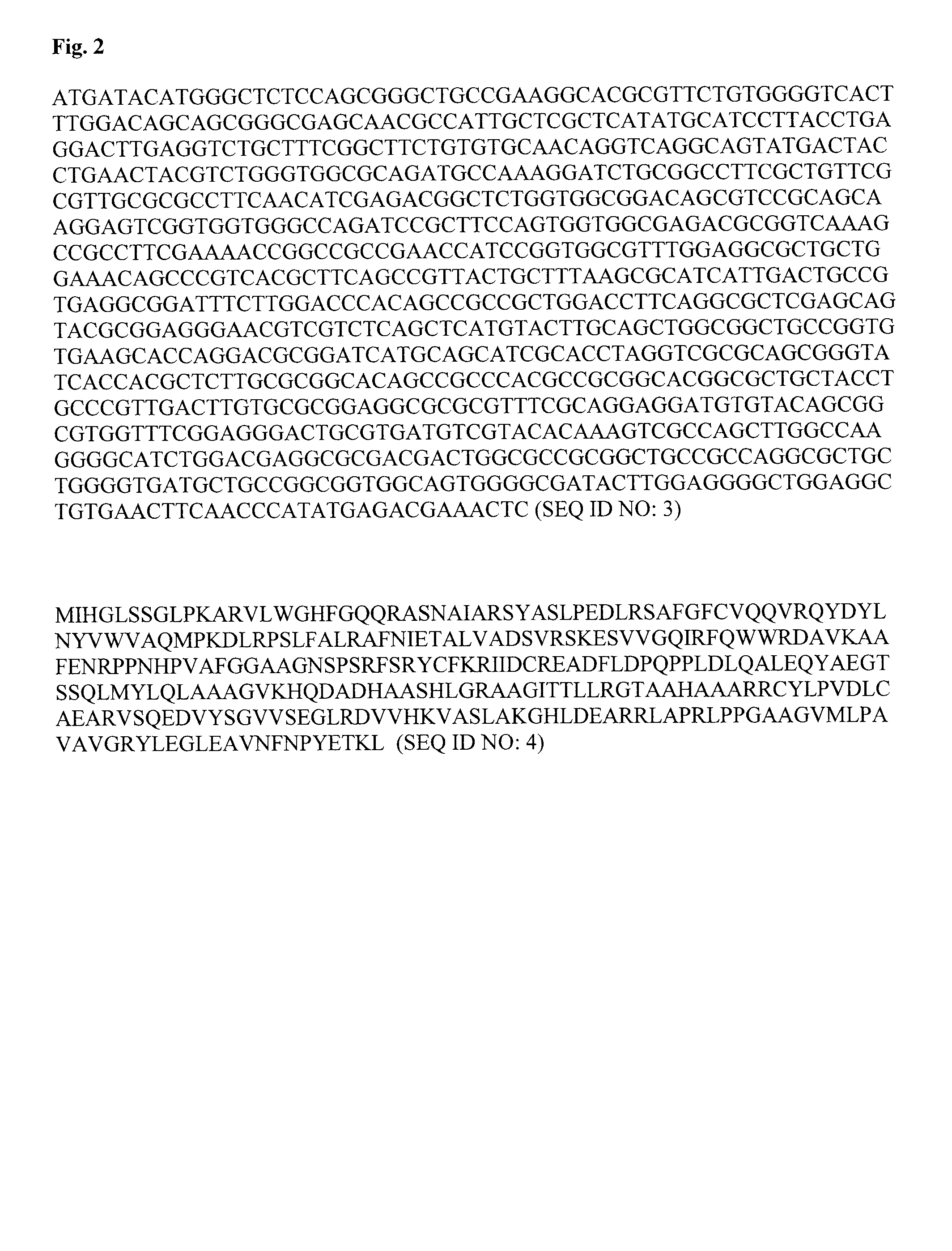Regulating the production of long chain hydrocarbons
a technology of long chain hydrocarbons and hydrocarbon molecule, which is applied in the direction of peptides, transferases, plant/algae/fungi/lichens ingredients, etc., can solve the problems of limited extraction of natural products such as botryococcenes from natural sources as photosynthetic organisms are typically limited, and achieve the effect of increasing the production level of botryococcene hydrocarbon molecule and increasing the expression of polynucleo
- Summary
- Abstract
- Description
- Claims
- Application Information
AI Technical Summary
Benefits of technology
Problems solved by technology
Method used
Image
Examples
example 1
[0080]The phytoene synthase protein sequence was of the green alga Chlamydomonas reinhardtii was obtained from the genome portal of the US DOE Joint Genome Institute located in Walnut Creek, Calif. This phytoene synthase protein sequence was initially used to perform a BLASTn search in other algal genomes, which are available through portals on the webpage of the Joint Genome Institute. The BLASTn search tool is integrated into the genome portal. BLASTn uses a protein sequence to search against translated nucleotide sequences. If possible genomic scaffolds were included in the BLASTn search. In addition, the partial sequence of the enzyme annotated so far as a phytoene / squalene synthase in the Chlamydomonas reinhardtii genome was used to identify similar sequences in other algal genomes. Further, the ‘advanced search’ search tool that is integrated to the genome portal of each genome was used to identify genes that were annotated and contain the terms ‘phytoene’ or ‘squalene’. Prote...
PUM
| Property | Measurement | Unit |
|---|---|---|
| size | aaaaa | aaaaa |
| length | aaaaa | aaaaa |
| Basic Local Alignment Search Tool | aaaaa | aaaaa |
Abstract
Description
Claims
Application Information
 Login to View More
Login to View More - R&D
- Intellectual Property
- Life Sciences
- Materials
- Tech Scout
- Unparalleled Data Quality
- Higher Quality Content
- 60% Fewer Hallucinations
Browse by: Latest US Patents, China's latest patents, Technical Efficacy Thesaurus, Application Domain, Technology Topic, Popular Technical Reports.
© 2025 PatSnap. All rights reserved.Legal|Privacy policy|Modern Slavery Act Transparency Statement|Sitemap|About US| Contact US: help@patsnap.com



